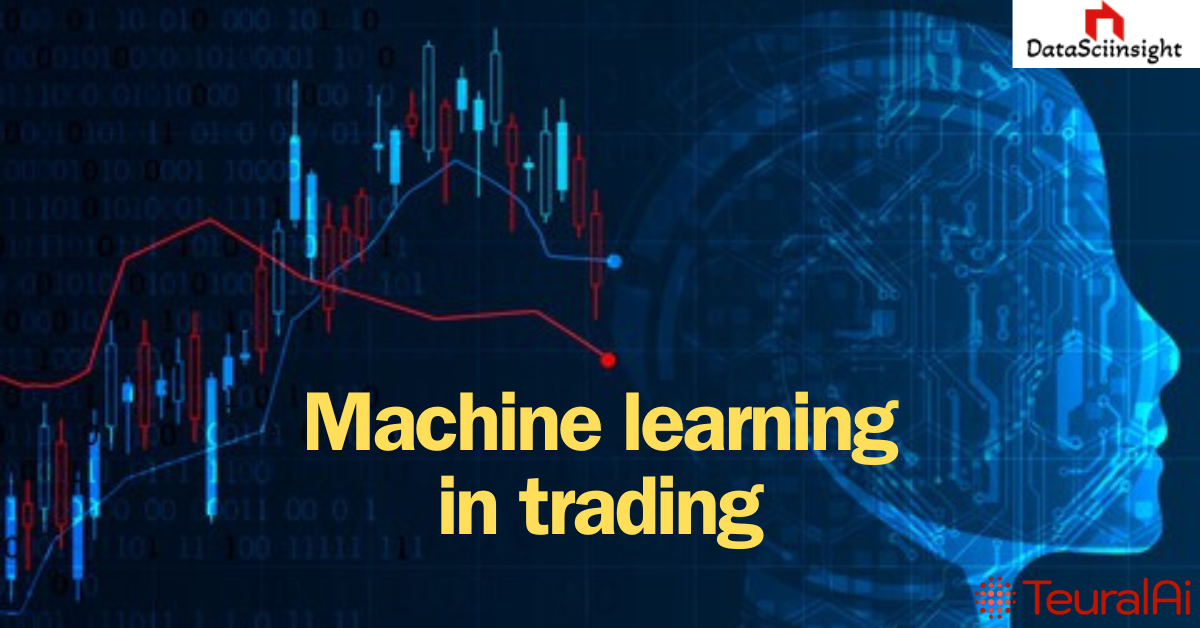
Machine Learning in Trading: 3 Powerful Strategies and Applications
Machine Learning has emerged as a prominent and dynamic field in the scientific realm. The synergy of human intelligence and computational capabilities is unraveling intricate problems that were once deemed insurmountable. Contemporary machines effortlessly manage vast datasets and unravel the complexities of scientific breakthroughs. Machine learning algorithms, adept at discerning patterns and relationships within data, utilize historical information to predict outcomes, classify data, cluster points, reduce dimensionality, and even generate innovative content. Pioneering applications like ChatGPT, Dall-E 2, and GitHub Copilot showcase the potential of machine learning in diverse domains. This transformative technology finds extensive applications across industries, such as e-commerce, social media, and news, through recommendation engines. While machine learning enhances problem-solving, optimizes business operations, and automates tasks, its intricate nature demands profound expertise and substantial resources. There exist four fundamental types of machine learning: supervised, unsupervised, semi-supervised, and reinforcement learning.
ALSO READ>>
AI TRADING TACTICS: MAXIMIZING RETURNS
1. Supervised Learning: Harnessing Machine Learning in Trading
Binary Classification: Divides data into two categories. Multiclass Classification: Chooses between more than two types of answers. Ensembling: Combines predictions from multiple models for enhanced accuracy. Regression Modelling: Predicts continuous values based on data relationships.
2. Unsupervised Learning: Exploring Machine Learning for Trading
Clustering: Segregates data based on similarity using clustering algorithms. Anomaly Detection: Identifies unusual data points using specialized algorithms. Association Rule: Discovers sets of frequently occurring items in a dataset. Dimensionality Reduction: Reduces variables in a dataset using specific techniques.
3. Machine Learning for Algorithmic Trading: Revolutionizing Trading Strategies
Machine learning algorithms play a pivotal role in optimizing decision-making for traders by maneuvering data and accurately forecasting market trends. By mitigating the impact of emotions, which often influence human-driven trading decisions, these algorithms enable timely actions and maximize returns.
Examples of algorithmic trading strategies include:
- Trade Execution Algorithms: Mitigate the impact on stock prices by splitting trade into smaller orders.
- Strategy Implementation Algorithms: Execute trades based on real-time market signals.
- Gaming Algorithms: Exploit price movements caused by large trades or other algorithmic strategies.
- Arbitrage Opportunities: Capitalize on price differentials between the same stock trading in different markets.
Algorithmic trading garnered early attention in the market due to its profitability. However, increased competition led to a notable decline in profitability. Traditional algorithms, crafted by programmers and data scientists, rely on “if and then” rules and lack the ability to self-upgrade through historical data learning. Capital market firms are now embracing machine learning to develop algorithms independent of rule-based systems. These machine learning-powered algorithms autonomously adapt to new trade patterns, eliminating the need for constant human intervention. Machine learning algorithms in trading analyze extensive data, identify patterns, and make predictions about market trends. Continuously learning and evolving, these AI trading systems adapt to changing market conditions, improving predictions over time unlike rule-based Algo Trading systems. Sentiment Analysis Empowered by Machine Learning. Machine Learning for Sentiment Analysis:
In the dynamic realm of the stock market, where sentiments hold considerable sway, companies are increasingly turning to machine learning and artificial intelligence for predictive insights. The interplay between market trends and public sentiments is pivotal, prompting a strategic shift toward leveraging advanced technologies.
Machine learning algorithms, fueled by artificial intelligence, are now deployed to analyze and interpret the sentiments of individuals, offering a predictive lens into stock price movements. Social media platforms emerge as robust channels for sentiment analysis, as individuals candidly express their opinions on various subjects. Natural Language Processing (NLP), a subfield within machine learning, takes center stage, enabling computers to comprehend and analyze human language intricacies.
Through NLP, sentiments about a company’s stock value are categorized into three distinct classes: negative, positive, and neutral. When optimism pervades public sentiments, a surge in stock prices is anticipated. Conversely, a pessimistic sentiment can herald a decline in stock values. Social media content, encompassing tweets, posts, and comments from stakeholders in the stock market, serves as a rich data source.
Machine learning algorithms meticulously process this social media data, facilitating the training of artificial intelligence models. These models, adept at discerning patterns and nuances in sentiments, become predictive tools, offering valuable insights into potential stock price fluctuations across diverse scenarios. The fusion of sentiment analysis and machine learning underscores a transformative approach in navigating the intricacies of the ever-evolving stock market landscape.
- How to Download Stock Data Using Interactive Brokers – 2024 - July 8, 2024
- Exploring the Best Python Libraries for Machine Learning – 2024 - April 20, 2024
- What is ElegantRL - April 11, 2024
Leave a Reply